Preakness attendance half of pre-pandemic levels. Why?
As I walked into Pimlico Race Course on Friday morning, Black-Eyed Susan day, at around 11am, I was struck by how…quiet it was.
I had sailed down Northern Parkway and Park Heights Avenue and into the track, where there were still spaces available in the main press lot. There was no line to pick up credentials. There were few pop-ups in the neighborhood, few local entrepreneurs setting up shop to offer home-cooked fare and cheap beverages to the (sparse) crowd (not) streaming towards the entry gates.
The grandstand and apron were curiously quiet, and there were rumors that the crowd was expected to be small on not only Friday, but also on Saturday, too. The rumors turned out to be true.
Preakness day attendance, according to a release provided by 1/ST, was “60,000+,” down from a reported 131,000+ in 2019, the last Preakness run without Covid restrictions. All-sources handle was over $104 million, though, down from 2021 but up 4.5 percent over 2019.
So the people were betting, even if they stayed away.
Preakness regulars since 2009, Vermonters Wesley Lawrence and Elizabeth Kruska are not what you’d call casual fans. They attend most big racing events every year, including the Kentucky Derby and the Breeders’ Cup, and they are partners in ownership groups. They are regulars at Saratoga. When they saw the price increase for tickets for this year’s Preakness, they blanched – but still decided to attend.
“This year, our grandstand apron seats are $390 each,” said Lawrence. “That’s on the rail on a folding chair. They were nowhere near that price last year—the increase is 30 or 40 percent. Being here has gotten more expensive and less pleasant.”
Adrianna Lynch, who grew up outside of Philadelphia and now lives in Kentucky, has in the past shot at Pimlico as a credentialed photographer. She tells a similar story about her family’s experience. From 2016–2019, her parents would buy four clubhouse seats and bring friends, but this year, they got priced out.
- Mid-Atlantic three stars: July 14, 2025
 Your five-minute read to catch up on racing highlights from around the Mid-Atlantic this past week!
Your five-minute read to catch up on racing highlights from around the Mid-Atlantic this past week!
“When you add in hotel rooms and concessions,” said Lynch, “it just got to be too much. There was one concession stand near our seats and it would run out of food and beverages, the toilets would overflow—it just got to the point where it’s not worth it.”
“Prices tripled for Turfside Terrace from pre-pandemic,” tweeted James Serio.
The oft-discussed fading physical plant at Pimlico is another reason cited by people who opted to stay home. On Twitter, Nazrana Dixon, who lives in Kentucky and is employed by Brisnet, said that she’s never come to the Preakness and hopes to attend one day “when they fix up at the track.”
“Working toilets are pretty important to me lol,” she posted. “All joking aside, I’ve heard Pimlico is a dump and I’d rather watch at home than have to travel there from Kentucky and have a mediocre experience.”
Another concern raised on social media was the length of the day: On Saturday, post time for the first race was 10:30am, with the Preakness scheduled to go off at 7:01pm. Of course, that’s common practice on big race days in 2022; the first race Kentucky Derby day went off at 10:34 a.m., the Derby runners left the gates at 7:02 p.m., and the nightcap was at 8:43.
Throughout Preakness day, empty seats on the apron and in the grandstand and clubhouse were plentiful. The infield area in front of the stage was packed for most of the day, but in other areas of the infield, there was plenty of open space.
And shortly after noon, after the fourth race, it took me only a minute or two at a concession stand to get a crabcake sandwich.
“Bathrooms, betting, and drink lines were all a fraction of what I’ve seen the last decade the race before the Preakness,” commented Sean Burke, adding later, “The parking lot exit said it all. Smooth sailing.”
Like Lawrence and Kruska, Burke wouldn’t miss the big weekend at Pimlico. Since moving to Annapolis from New York 10 years ago, he’s given his father Preakness tickets for Christmas, and it’s a tradition for the two to attend every year.
Writer David Hill, who has covered the Preakness for a number of media outlets, spoke wistfully about not being there this year.
“I’d definitely go as a paying customer and not only as a writer,” he said from Brooklyn, where he lives with his wife and three children. “I take my kids to the track all the time, but I wouldn’t take them to the Preakness, or the Belmont Stakes, for that matter. The crowds are too big and chaotic, and it’s tough to say to the family, ‘See ya, I’m leaving to go have a good time without you and I’m not even getting paid for it.’”
While Hill acknowledged regret about the deterioration of the facility, it doesn’t deter him. “People complain about it being in bad shape, but if you go only for the Preakness, when it’s getting stress-tested by an insanely large crowd, of course there are going to be issues,” he said. “I’m not the kind of race fan who needs everything to be pristine.”
- Argyle and Thoroughbred racing in the 1830s
 Connected to Supreme Court justices and governors, the Maryland-bred Argyle became one of the best horses of the 1830s. His story.
Connected to Supreme Court justices and governors, the Maryland-bred Argyle became one of the best horses of the 1830s. His story.
Of the dozen or so people with whom I discussed it, none mentioned the absence of the Kentucky Derby winner as a reason for staying away this year.
At five minutes to post for the Preakness Stakes, empty seats on the apron were plentiful. Though they did fill in a bit as the horses loaded, only the most optimistic observers would consider it a big crowd.
A press release provided by 1/ST and prepared by PR firm The Brand Guild spent over 1,000 words detailing the celebrities in attendance and the food and beverage options over the two days. It also suggested that the downsized crowd was what the company wanted.
“This year’s reimagined festivities designed to reduce the event footprint for a fresh, post pandemic guest experience welcomed 60,000+,” the release said, and it included this statement from Belinda Stronach, chairperson, CEO and president of 1/ST:
I would like to thank everyone who came out to enjoy Preakness 147 celebrations and for bringing an energy and excitement that made this event the hottest ticket in town, literally! This year’s success would not have been possible without the collaborative spirit of our stakeholders, partners, and the tremendous efforts of Kevin Liles and Mayor Brandon Scott. Collectively we put Baltimore 1/ST and proved, once again, that the Preakness is truly second to none!
The tortured history of Pimlico and its fading physical plant has been well documented, at The Racing Biz and elsewhere, and perhaps 1/ST did get exactly what they wanted: a smaller, more manageable crowd that doesn’t tax the track’s infrastructure, with little effect on the handle pouring in from off-track.
Some of those who came and sat on the front side, however, had complaints about the multi-level tents and ribbon boards blocking their views. “Way to go Pimlico. Pay double from last year for seats on the finish line and you put up a wall so we can’t see the turf track,” one person wrote on Facebook.
Given the mountains of money that the ownership must have spent to secure performers like Megan Thee Stallion and Ms. Lauryn Hill, the “fresh, post pandemic (sic) guest experience” at Pimlico appears to be one designed to attract deep-pocketed customers to experience elite hospitality. To some everyday racing fans, though, it felt like the sport itself was a necessary but inconvenient sideshow.
PHOTOS
LATEST NEWS



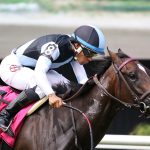


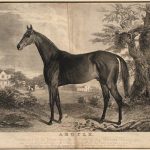




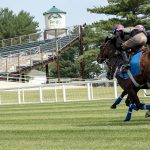
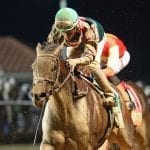


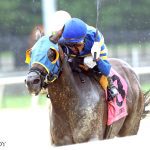






A couple of years before the pandemic, they started not allowing you to bring food or water into the track. No sense buying that stuff from the locals which we always did. They would allow you to fill an empty container with water. I would not recommend that.
$10 for a can of Coors Light (and not even a tall one) and $5 for a can of Pepsi didn’t help.
It would also help if you could actually watch a race…..the entire backstretch is blocked by the infield hospitality tents!
The marketing geniuses at Stronach figured that, since there were no fans in 2020, and only 10,000 in 2021, that people would pay anything to attend the Preakness this year. After ten years of attendance, my four seats in the Grandstand Apron were among those empty ones in your photo. With parking included, cost went from $275 to $420. What a load of corporate gobbledegook when they were asked about the low attendance. Sounded like people explaining why they should not be fired for trying this stunt. Declining entertainment value in a delapidated venue. Stronach has said they prefer the Preakness at Laurel, which is why they have put nothing into Pimlico. This three years in a row Stronach has taken a bath with the Preakness- will they maintain their course and go for four?
Restricted attendance negatively impacted the horsemen’s purse account as well and not a peep from the MTHA?
Handle affects purse account and slots revenue. Not on track attendance. Purses went up again for the rest of the year so that accounts looks healthy.
Actually, attendance does affect the purse account. The track and purse account get a significantly bigger share of the money wagered on-track than they do from off-track sources.
I stand corrected
I’ve gone to the Black Eyed Susan Day almost every year for the last 20 years. My seats last year were $50 , this year $92. I watched and wagered from home. I’ll get the Pimlico experience this weekend.
A friend and I went to the Preakness for nearly 20 years, We got there early and were one of the first in line. I would carry two folding chairs and I managed to get him to carry the cooler full of beer and homemade grinders. I would run to the finish line and park the chairs. One year they took about the whole stretch area and made the “BOX” seat. The photo of the seats tells it all. We thought that $50 each seat with minimum of 6 ($300) was too much. Now single seats cost more than a box did. The infield was a major party. Now it looks like they have major construction for VIP”s. Now you really cannot see the race. The road to Hell was started by the deFrances kid but Stronach polished it off. $10 a beer and $5 for a coke is ridiculous. Lord knows what the prices for food, even a grinder costs. The last straw was when they started of charge $150 for handicap parking for a disabled veteran. Now with the additional Stronach policy and price changes you couldn’t pay ME to go.
I bet if they paid you, you would go
Ms Stronach has also turned Florida Derby Day into a joke. Priced everyone but the corporate hotshots out of the game. What was once a great event is now also just one giant price gouge with more empty seats than occupied. Same philosophy on Pegasus Day. Her mindset is obviously to go for the jugular of those that enjoy the sport.
I have not seen attendance figures for BES day. Lots of empty seats (at $84 a pop) at the 1/8 pole along the stretch. I think last year those same seats were $40 or $50. I’ve gone to BES day since 1995. At such a ridiculous price, I’ll watch from home next year.
I have been going with our group of 12 for over 30 years, going back to the days where you put down a blanket on concrete, where they later added seats. We brought in coolers, food, etc and it was always a great event.
Each year, management added costs, stopped the food and beverages from the outside, and this year drastically raised the ticket prices. Most of my group still went. They know sit in the grandstand now near the finish line. This year, I finally admitted I was prices out. All those little costs start to add up. For that kind of money for tickets, concessions, hotel, I can go to another event like Saratoga or Keeneland. It’s a win win. They get their corporate crowd that they want, and I get more value.